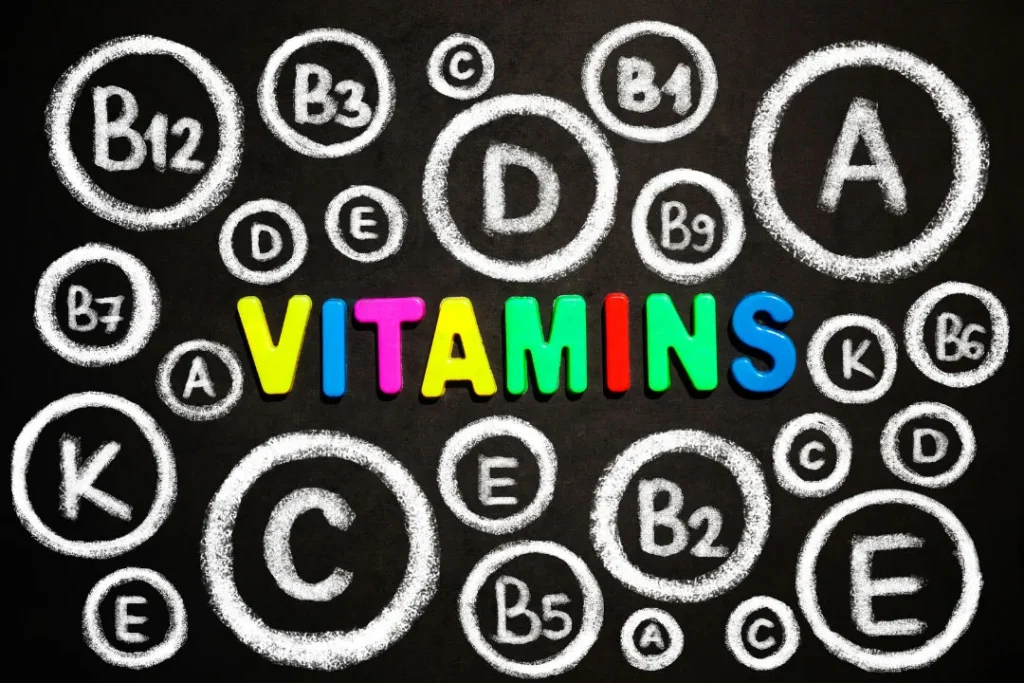Apium graveolens is a versatile vegetable. You may know it by its more common name, Celery. Celery has been used for both culinary and medicinal purposes for an extensive time. Celery possesses health advantages in addition to its refreshing flavor and crisp texture. This article will examine the nature of Celery, go over its potential health benefits, look at the best dosage suggestions, discuss any potential side effects, look at any possible drug interactions, and give other helpful information for using this dietary supplement responsibly and intelligently. If you already ingest Celery, then you may learn more about how it’s benefitting you. If Celery isn’t a part of your diet currently, this information may affect your decision to try some.
You May Also Like:
The 7 Most Powerful Huperzine A Brain Benefits
Build Bright Brains with Omega-3s: The 7 Powerful Benefits for Brain Development in Kids
Celery: Benefits, Dosage, Side Effects, Drug Interactions, and Other Important Information is an original (NootropicsPlanet) article.
Nature of Celery
Celery is a member of the Apiaceae family. It has a bright green hue and upright stalks, broad leaves, and a distinctive scent. The plant’s distinctive characteristics and possible health advantages are a result of its abundance in phytochemicals, such flavonoids, coumarins, and phenolic acids. Additionally, Celery is a fantastic source of vitamin K, vitamin C, potassium, and folate as well as other important vitamins and minerals for strong health.
Health Benefits of Celery
- Celery includes a number of bioactive substances, including as apigenin and luteolin. These substances have strong anti-inflammatory properties. These substances may assist in the treatment of chronic disorders, including arthritis and cardiovascular diseases, by reducing inflammation in the body.
- Antioxidant Activity: Celery has antioxidant qualities due to the presence of flavonoids like apigenin. Antioxidants shield cells from oxidative damage and perhaps reduce the incidence of chronic illnesses like cancer and neurological diseases. Moreover, antioxidants scavenge dangerous free radicals.
- Blood Pressure Control: Phthalides help relax the muscles in artery walls. This form of relaxation improves blood flow and lowers blood pressure. These are contained within Celery. Eating celery regularly may help with hypertension management.
- Digestive Health: Celery has a lot of dietary fiber, which helps to keep the digestive system in good shape and prevents constipation. Furthermore, the presence of coumarins in Celery may promote the release of digestive enzymes and lessen gastrointestinal irritation.
- Hydration and detoxification: Celery is a hydrating vegetable due to its high water content. Additionally, Celery includes substances that promote liver function and help with detoxification processes, such as caffeic acid and polysaccharides made of pectin.
- Although there is no official recommended dose for Celery, including it in a balanced diet has positive health effects. A suitable amount is between one and two stalks of Celery per day, or around 100 grams. However, depending on variables including age, health, and personal preferences, individual demands may differ. For individualized guidance, we advise talking to a medical practitioner or a certified dietician.

Chemistry of Celery
Celery has a wide variety of chemical constituents that contribute to its medicinal and nutritive qualities. Celery contains a number of important substances, such as:
- Phenolic Compounds: Celery contains a variety of phenolic compounds, such as apigenin, caffeic acid, and ferulic acid. They are strong antioxidants, so these substances scavenge free radicals and shield cells from oxidative harm.
- Coumarins: Bergapten and psoralen are two coumarins found in Celery. Coumarins have proven connections to the strengthening of biological activity such as anti-inflammatory, antibacterial, and antioxidant properties.
- Flavonoids: Two flavonoids found in Celery are apigenin and luteolin. These substances have anti-inflammatory characteristics and may help lower the chance of developing chronic illnesses.
- Phthalides: Phthalides, such as sedanenolide and 3-n-butylphthalide (3nB), are especially prevalent in Celery. These substances are in charge of giving Celery its distinctive taste and scent. Phthalides have blood pressure-lowering effects through encouraging blood vessel relaxation and vasodilation.
Physiological Mechanisms of Action
Celery’s physiological effects on the body and brain are due to interactions between its chemical constituents and numerous biological functions. Here are a few mechanisms:
- Anti-inflammatory Effects: Phenolic substances like caffeic acid and ferulic acid are anti-inflammatory by blocking pro-inflammatory enzymes and signaling pathways. Flavonoids like apigenin and luteolin also have anti-inflammatory effects. Inflammation in the body is lessened by these substances’ ability to decrease the generation of inflammatory mediators.
- Antioxidant Activity: Celery’s phenolic components and flavonoids protect cells and tissues from oxidative damage by neutralizing dangerous free radicals. Celery may help prevent chronic illnesses and advance general health by lowering oxidative stress.
- Control of blood pressure: Phthalides in Celery relax the arterial wall muscles, causing vasodilation and better blood flow. This lowers blood pressure and might improve cardiovascular health.
- Support for Digestive Health: Celery’s high dietary fiber content encourages regular bowel movements and a healthy digestive system. Celery contains coumarins, which may increase the release of digestive enzymes and facilitate the digestion and absorption of nutrients.
- Hydration and Detoxification: Celery is a vegetable that promotes optimal hydration and electrolyte balance due to its high water content. In addition, the pectin-based polysaccharides and caffeic acid found in Celery support the function of the liver and aid in the detoxification process.
While the scientific literature supports these physiological processes, it is vital for you to keep in mind that further study is required to comprehend the precise effects on the body completely and brain.


Optimal Dose of Celery
While there is no officially recommended dose for Celery, including it in a balanced diet is suggested for its potential health benefits. An ideal consumption is thought to be between one and two stalks of Celery per day, or about 100 grams. Nonetheless, individual needs may differ based on factors such as age, overall health, and personal dietary preferences. For personalized advice, consulting with a healthcare provider or a certified dietitian is recommended.
It’s important for you to note that while consuming Celery can be beneficial, excessively large amounts may cause harm due to its natural bioactive compounds. Please maintain a varied and balanced diet. If you’re planning to increase your intake significantly or use Celery for medicinal purposes, please discuss it with a healthcare professional to ensure appropriate and safe for your specific health situation.
Side Effects of Celery
Although Celery is typically safe to eat, some people may develop allergic responses, especially if they are known to have allergies to other members of the Apiaceae family of plants, such carrots or parsley. Celery allergies may include skin rashes, itching, swelling, or breathing problems. It is crucial for you to use care and get medical help if any negative responses happen.


Potential Substance Interactions with Celery
Celery may interact with several types of drugs. For example, Celery’s diuretic qualities may intensify the effects of drugs like diuretics or anticoagulants, which might result in difficulties. To prevent any negative effects or drug interactions, those taking such drugs should speak with their doctors before drastically increasing their Celery consumption.
Best Responsible Uses of Celery
- Include Celery in a Balanced Diet: The best approach to benefit from Celery’s nutritional advantages is to include it in a diverse and balanced diet. Use Celery as a crisp side to dips and spreads, as a salad or soup ingredient, or as a snack when eaten raw. You may improve the overall nutritional content of your meals by combining Celery with other vegetables and sources of protein.
- Blend or juice Celery: Celery juice has grown in popularity recently due to claims that it may have health advantages. Celery may provide a concentrated amount of its nutrients, including vitamins, minerals, and phytochemicals, by juicing or blending. It’s crucial for you to keep in mind, however, that juicing eliminates the nutritious fiber found in whole Celery. Incorporate Celery juice in a balanced diet that also contains fiber from other sources if you decide to drink it.
- Choose Fresh and Organic Celery: Whenever feasible, choose fresh and organic Celery when shopping. As a result, the Celery is guaranteed to be free of artificial pesticides and may have a greater nutritious content.
- Storage: Keep Celery properly in the refrigerator to preserve its nutritious value and freshness. To stop Celery stems from withering, place them in a plastic bag or cover them with a moist towel.
- Experiment with Cooking Techniques: Although Celery is often eaten raw, it may also be prepared in a variety of ways. Celery may give soups and stews a new texture and taste by steaming, stir-frying, or adding it. The vitamin content of Celery may, however, be somewhat decreased while cooking. Avoid overcooking Celery, and cook it for shorter times if feasible to retain nutrients.
- Include Other Nutrient-Rich Foods with Celery: Think about combining Celery with other nutrient-dense meals to get the most out of its nutritional advantages. For instance, to make meals that are well-rounded and nutritious, pair Celery with leafy greens, lean meats, whole grains, and healthy fats.


Celery:
Conclusion
Celery is a versatile plant and food. It can be consumed raw, cooked as an ingredient in a recipe, ingested as a solid, or consumed in liquid form. Celery has high nutritional value as well as longevity within many cultures as a part of various diets. When consumed as a supplement, there are an abundance of factors that contribute to the presence of positive consequences on your health. From the chemical and molecular compositions of Celery to its bright colors and interesting texture, it is a plan that has appeal for boosting health.
References:
- “Effects of adaptogens on the central nervous system and the molecular mechanisms associated with their stress-protective activity.” Retrieved from: https://www.mdpi.com/1424-8247/3/1/188
- “Health benefits and risks of celery.” Retrieved from: https://www.medicalnewstoday.com/articles/270678
- “A Review of the Antioxidant Activity of Celery (Apium graveolens L).” Retrieved from: https://pubmed.ncbi.nlm.nih.gov/28701046/
Important Note: The information contained in this article is for general informational purposes only, and should not be construed as health or medical advice, nor is it intended to diagnose, prevent, treat, or cure any disease or health condition. Before embarking on any diet, fitness regimen, or program of nutritional supplementation, it is advisable to consult your healthcare professional in order to determine its safety and probable efficacy in terms of your individual state of health.
Regarding Nutritional Supplements Or Other Non-Prescription Health Products: If any nutritional supplements or other non-prescription health products are mentioned in the foregoing article, any claims or statements made about them have not been evaluated by the U.S. Food and Drug Administration, and such nutritional supplements or other health products are not intended to diagnose, treat, cure, or prevent any disease.
